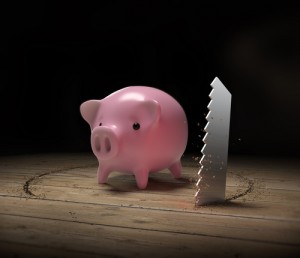Last week we covered: the kickback, overbilling, expense padding, volunteer compensation and underreporting income. In the final installment of this two-part series, we continue highlighting common examples of how HOA’s can unwittingly be stripped of their monies:
series, we continue highlighting common examples of how HOA’s can unwittingly be stripped of their monies:
- Overreporting expenses. Owners should beware when financial statements show an exaggerated amount for recurring regular monthly expenses. For example, the reported electricity budget is 40 percent higher than the actual electric usage, or the maintenance is reported as double the actual cost. One-time expenses may also be overreported. The goal of overreporting expenses is to create a “slush fund” that can then be siphoned off by whoever is in charge of the bank account.
- False bottoms. This financial chasm is created when income is underreported or expenses have been overreported. False bottoms are created by making false entries in books. By creating a “false bottom,” would-be thieves can extract monies without being easily spotted.
- Photoshopping bank statements. In the age of computers, this illegal act is not at all uncommon. If you go online and Google “How to Photoshop a bank statement,” you’ll get an amazing 508,000 results. The first query: “How do I edit a bank statement after scanning?” Prior to taking off with more than $2 million in assets, one management company sent fake bank statements to more than 40 condo associations it managed.
- Creative accounting. This is any accounting that fails to follow generally accepted accounting principles (GAAP.) For example, GAAP would include preparing a statement of assets and liabilities, a profit and loss statement, and an income and expense report. By failing to follow basic accounting principles and setting arbitrary and misleading matrixes, owners are overwhelmed and often do not admit when they cannot understand the “creative accounting procedures.”
- Insider trading. Invested on Wall Street, this highly illegal act occurs when board members use their power, position, and inside knowledge to acquire property for personal wealth and gain. In associations whose bylaws or covenants, conditions, and restrictions (CC&Rs) contain a right of first refusal, board members have been known to avoid presenting the sale to the board in an open meeting and signing their own waiver in order to purchase a pristine unit at below-market value. High-end cooperative associations are equally vulnerable to this type of abuse, wherein board directors deny purchase applications and subsequently purchase the unit for their own personal pleasure and financial profit. Under the “buddy rule,” fellow board members simply look the other way. Note that association insider trading is not regulated in any way. “Insider trading” is typically the illegal act of trading stocks to one’s own advantage through the use of confidential information. If only Martha Stewart could have been so lucky!
- Debit cards. They simply are an embezzler’s dream come true. Association debit cards have been routinely used for traveling, gambling, medical bills, gas, groceries, cell phone bills and even lingerie purchases at Victoria’s Secret. Some associations are lulled into a false sense of security when two signatures are required on checks. Debit cards require only one signature.
- Forgery. Perhaps one of the oldest scams around, forgery is still running rampant in homeowner associations across the nation. In several cases, signatures of deceased or mentally impaired owners were used to cash checks. Additional means of embezzlement include double billing, false billing, data falsification, inflated management fees, phantom labor, bundling, and unapproved billing.
Best practice would mandate association finances to be transparent to the owners at all times. The monies belong to the owners as a whole – not the board officers or members. Next week, we’ll discuss some clues to help you discover if your HOA is the victim of embezzlement.
